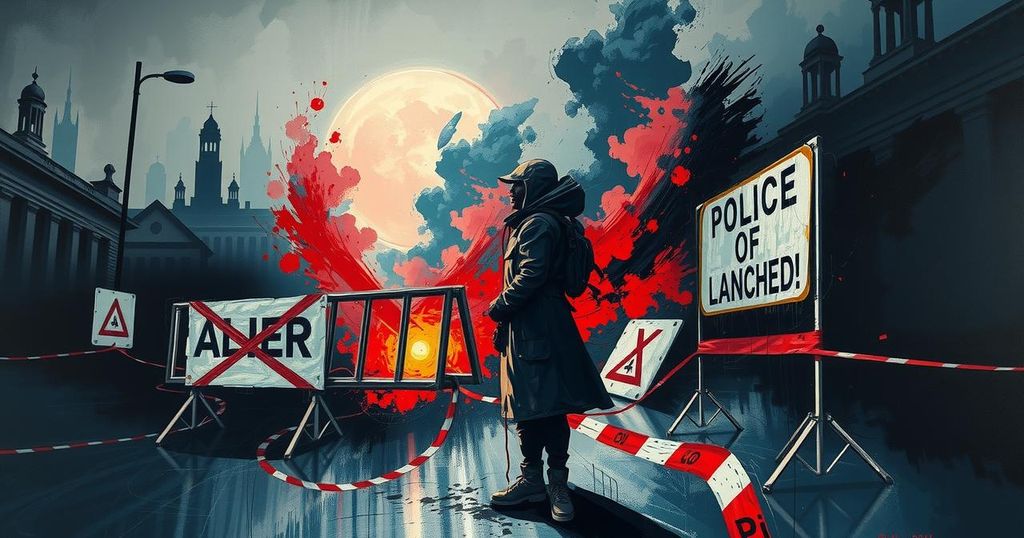Political Violence in the United States: A Disturbing Surge and Its Implications
The article delves into the recent surge of political violence in the U.S., highlighting incidents like the shooting of lawmakers in Minnesota and attacks on embassy staffers. Experts express grave concerns about the erosion of norms against violence and the complicity of political rhetoric. This violent trend reflects longstanding historical patterns and the complex ideologies driving it, underscoring the need for societal reflection.
Political violence has woven its way into the fabric of recent US history, with motivations and justifications often as varied as the acts themselves. As the country grapples with a spike in such incidents, the grim toll keeps rising. The shooting of two well-known Democratic lawmakers in Minnesota is, unfortunately, only the most recent chapter in this troubling saga. This incident follows a series of murders and attacks over just the last couple of months, including the tragic deaths of two Israeli embassy staffers in Washington, D.C., and a Colorado firebombing targeting a march for the release of Israeli hostages, all of which leave communities feeling vulnerable.
In the last several months, the American landscape has also witnessed violence against lawmakers themselves, like an attack on the husband of former House Speaker Nancy Pelosi and the assassination of a health care executive in New York City towards the end of last year. The list is distressing and not exhaustive; the scale of violence seems to escalate. Matt Dallek, a political scientist from Georgetown University, expressed concern over a shift in societal norms. “We’ve entered into this especially scary time in the country where it feels the sort of norms and rhetoric and rules that would tamp down on violence have been lifted,” he reflects.
The motivations behind individual shootings often echo larger political discourse, which can lead to horrific massacre events. From the 2018 attack at a synagogue in Pittsburgh to the shooting at a Buffalo grocery store in 2022, extremists have invoked conspiracy theories that paint communities of colour as existential threats. A recent report by the Anti-Defamation League highlights that from 2022 to 2024, all political killings in the US were attributed to right-wing extremists — until a horrific attack in 2025 changed that narrative.
Jacob Ware from the Council on Foreign Relations noted the randomness and intricacy of these violent acts are growing. It’s not just one ideology behind the violence; it appears to span various beliefs and motives. Reflecting on the historical context, the US has long been immersed in a narrative filled with political violence, and many experts claim we haven’t seen a surge this potent in decades.
Recalling years gone by, recent events add to a long, dark history marked by political killings and social turmoil, reminiscent of assassinations and unrest from the 1960s and 1970s. Ware points out that the current situation has been exacerbated by a shift in focus within law enforcement, seeing a decrease in efforts to combat white supremacist extremism. This, combined with key pardons granted under the Trump administration for those involved in the January 6 assault, signals a worrying precedent that could embolden further acts of violence.
The political landscape is further complicated by the fact that not all philosophers of violence adhere to clear ideologies. In fact, some emanate from deeply personal struggles. A recent car bomb incident at a fertility clinic in Palm Springs exemplified such nihilistic beliefs rather than a clear partisan agenda. Yet, during these attacks, the blame game is afoot, with many rushing to attach labels to perpetrators based on their affiliations. Following the Minnesota shootings, the alleged attacker, Vance Boelter, was painted controversially by netizens as connected to the left — despite no concrete evidence tying him to any definitive ideological movement.
Right-wing commenters have attempted to leverage Boelter’s past connections to Democratic leadership as evidence of a violent left. This narrative mirrors past attacks, where unfounded conspiracy theories ballooned into wider political assumptions. In response to the Minnesota attack, Nancy Pelosi emphasised the need for collective responsibility: “All of us must remember that it’s not only the act of violence, but also the reaction to it, that can normalize it.” Tragic irony looms in Trump’s rhetoric, which has previously stirred concerns about escalating tensions. Now, the former president condemns the latest violence even as his history of incendiary remarks hovers ominously over the current political discourse.
In summary, political violence in the United States has escalated alarmingly, as shown by recent incidents targeting lawmakers and communities alike. From the disturbing killings of Israeli staff to the targeted attacks on Democrats, each act reverberates through the fabric of society, raising anxieties about the present political climate. Experts caution that a lack of accountability and the rise of chaotic ideologies contribute to this wave of violence, urging the need for reflection and collective action against normalising such horrific acts.
Original Source: apnews.com
